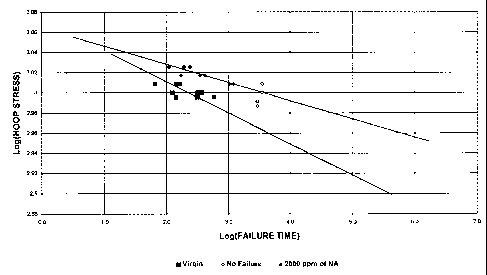Some of the information on this Web page has been provided by external sources. The Government of Canada is not responsible for the accuracy, reliability or currency of the information supplied by external sources. Users wishing to rely upon this information should consult directly with the source of the information. Content provided by external sources is not subject to official languages, privacy and accessibility requirements.
Any discrepancies in the text and image of the Claims and Abstract are due to differing posting times. Text of the Claims and Abstract are posted:
| (12) Patent: | (11) CA 2199556 |
|---|---|
| (54) English Title: | POLYOLEFIN PIPE |
| (54) French Title: | TUYAUX EN POLYOLEFINE |
| Status: | Expired and beyond the Period of Reversal |
| (51) International Patent Classification (IPC): |
|
|---|---|
| (72) Inventors : |
|
| (73) Owners : |
|
| (71) Applicants : |
|
| (74) Agent: | |
| (74) Associate agent: | |
| (45) Issued: | 2006-10-03 |
| (22) Filed Date: | 1997-03-10 |
| (41) Open to Public Inspection: | 1998-09-10 |
| Examination requested: | 2002-02-25 |
| Availability of licence: | N/A |
| Dedicated to the Public: | N/A |
| (25) Language of filing: | English |
| Patent Cooperation Treaty (PCT): | No |
|---|
| (30) Application Priority Data: | None |
|---|
Polyolefin pipes, and particularly gas pipe, in which the olefin
polymer has been nucleated with from 1,500 to 10,000 ppm based on the
weight of the polyolefin of a nucleating agent which is a dibenzylidene
derivative of sorbitol or xylitol have an improved long term hydrostatic
strength.
Note: Claims are shown in the official language in which they were submitted.
Note: Descriptions are shown in the official language in which they were submitted.

2024-08-01:As part of the Next Generation Patents (NGP) transition, the Canadian Patents Database (CPD) now contains a more detailed Event History, which replicates the Event Log of our new back-office solution.
Please note that "Inactive:" events refers to events no longer in use in our new back-office solution.
For a clearer understanding of the status of the application/patent presented on this page, the site Disclaimer , as well as the definitions for Patent , Event History , Maintenance Fee and Payment History should be consulted.
| Description | Date |
|---|---|
| Revocation of Agent Requirements Determined Compliant | 2020-09-01 |
| Time Limit for Reversal Expired | 2008-03-10 |
| Inactive: Adhoc Request Documented | 2007-05-08 |
| Letter Sent | 2007-03-12 |
| Grant by Issuance | 2006-10-03 |
| Inactive: Cover page published | 2006-10-02 |
| Pre-grant | 2006-07-18 |
| Inactive: Final fee received | 2006-07-18 |
| Notice of Allowance is Issued | 2006-03-27 |
| Letter Sent | 2006-03-27 |
| Notice of Allowance is Issued | 2006-03-27 |
| Inactive: IPC from MCD | 2006-03-12 |
| Inactive: IPC from MCD | 2006-03-12 |
| Inactive: Approved for allowance (AFA) | 2005-11-16 |
| Amendment Received - Voluntary Amendment | 2005-08-29 |
| Inactive: S.30(2) Rules - Examiner requisition | 2005-04-26 |
| Amendment Received - Voluntary Amendment | 2004-11-25 |
| Inactive: S.30(2) Rules - Examiner requisition | 2004-06-07 |
| Inactive: Applicant deleted | 2002-07-31 |
| Letter Sent | 2002-04-16 |
| Request for Examination Received | 2002-02-25 |
| Request for Examination Requirements Determined Compliant | 2002-02-25 |
| All Requirements for Examination Determined Compliant | 2002-02-25 |
| Application Published (Open to Public Inspection) | 1998-09-10 |
| Inactive: First IPC assigned | 1997-07-17 |
| Inactive: IPC assigned | 1997-07-17 |
| Inactive: IPC assigned | 1997-07-17 |
| Inactive: IPC assigned | 1997-07-17 |
| Inactive: IPC assigned | 1997-07-17 |
| Inactive: IPC assigned | 1997-07-17 |
There is no abandonment history.
The last payment was received on 2005-11-21
Note : If the full payment has not been received on or before the date indicated, a further fee may be required which may be one of the following
Please refer to the CIPO Patent Fees web page to see all current fee amounts.
| Fee Type | Anniversary Year | Due Date | Paid Date |
|---|---|---|---|
| Registration of a document | 1997-03-10 | ||
| Application fee - standard | 1997-03-10 | ||
| MF (application, 2nd anniv.) - standard | 02 | 1999-03-10 | 1998-10-29 |
| MF (application, 3rd anniv.) - standard | 03 | 2000-03-10 | 1999-11-10 |
| MF (application, 4th anniv.) - standard | 04 | 2001-03-12 | 2000-11-14 |
| MF (application, 5th anniv.) - standard | 05 | 2002-03-11 | 2001-10-31 |
| Request for examination - standard | 2002-02-25 | ||
| MF (application, 6th anniv.) - standard | 06 | 2003-03-10 | 2002-11-01 |
| MF (application, 7th anniv.) - standard | 07 | 2004-03-10 | 2003-12-09 |
| MF (application, 8th anniv.) - standard | 08 | 2005-03-10 | 2004-12-02 |
| MF (application, 9th anniv.) - standard | 09 | 2006-03-10 | 2005-11-21 |
| Final fee - standard | 2006-07-18 |
Note: Records showing the ownership history in alphabetical order.
| Current Owners on Record |
|---|
| NOVA CHEMICALS LTD. |
| Past Owners on Record |
|---|
| ALEXEI KAZAKOV |
| JAMES ARTHUR AUGER |
| RICHARD KOLASA |
| STAN ALLAN GRABOW |